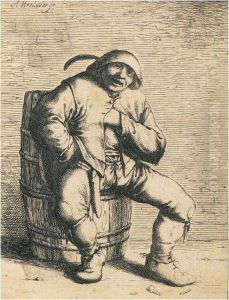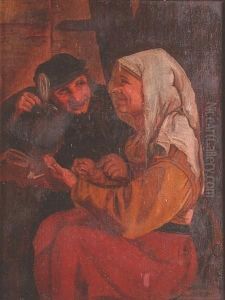Willem Basse Paintings
Willem Basse was a Dutch Golden Age painter, primarily known for his work as a portrait artist, though detailed records of his life are somewhat scarce, making his exact birth and death years a bit uncertain. He is believed to have been born between 1580 and 1590, in the Netherlands. Basse's contributions to art are primarily recognized in the context of the Dutch Golden Age, a period in the 17th century during which Dutch art, science, trade, and military were among the most acclaimed in the world.
Basse's work is characterized by its detailed depiction of individual characteristics, a testament to the Dutch Golden Age's emphasis on realism and the human figure. He often painted portraits of notable figures of his time, capturing not just the physical likeness but also a sense of the subject's personality and social status. This was in line with the era's preferences, where portraiture became an important genre, reflecting the burgeoning middle class's desire for art that celebrated personal achievement and status.
Despite his talent and contributions to the Dutch art scene, Willem Basse has not been as widely recognized as some of his contemporaries, such as Rembrandt or Vermeer. This lack of widespread recognition might be attributed to the limited number of his works that have survived or been definitively attributed to him. Nevertheless, his existing portraits are valued for their craftsmanship, attention to detail, and place within the broader context of 17th-century Dutch portraiture.
Basse's death is believed to have occurred between 1633 and 1637. The exact details of his life and career remain partially obscured by time. However, his work continues to be studied and appreciated for its contribution to the Dutch Golden Age of painting, offering insights into the era's social and cultural dynamics as well as its artistic preferences.



